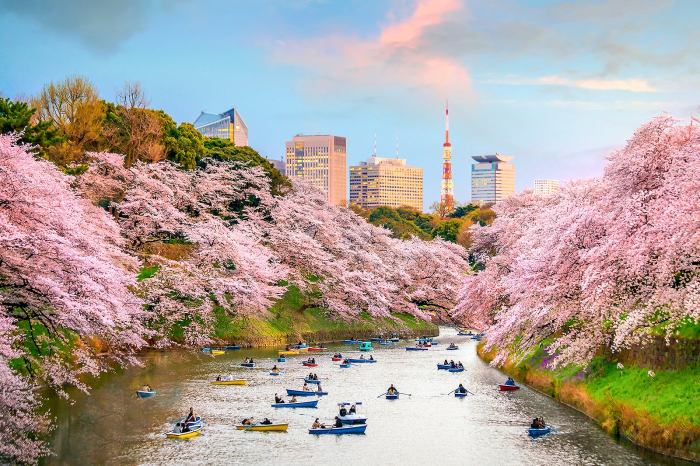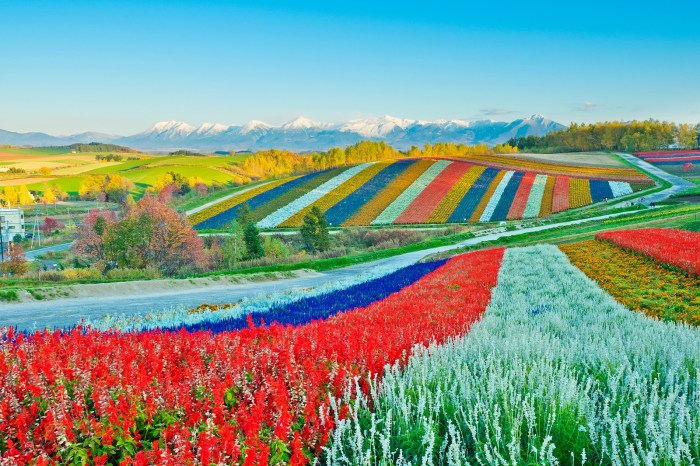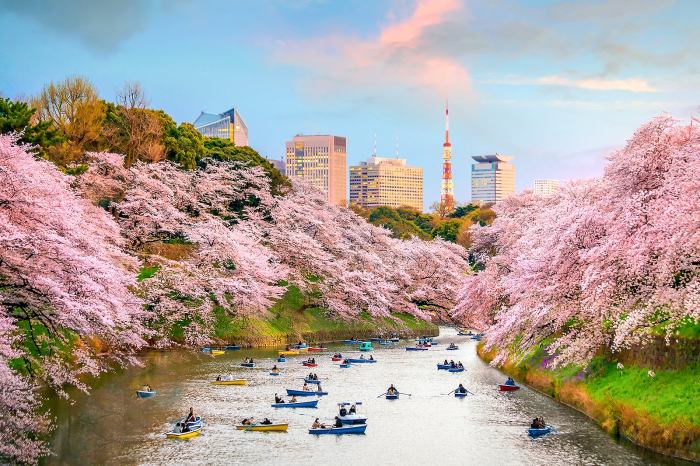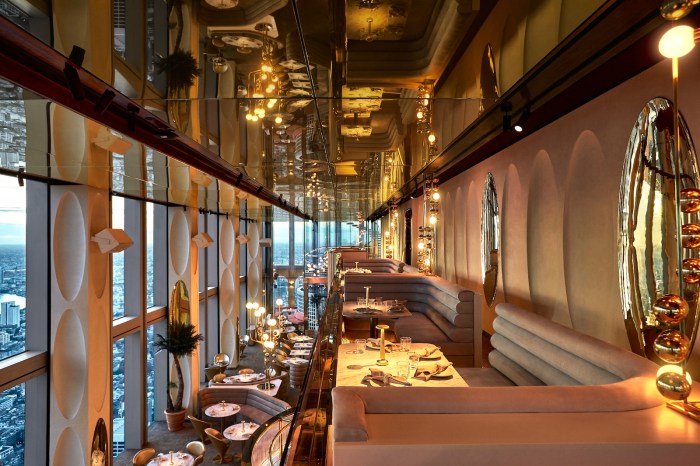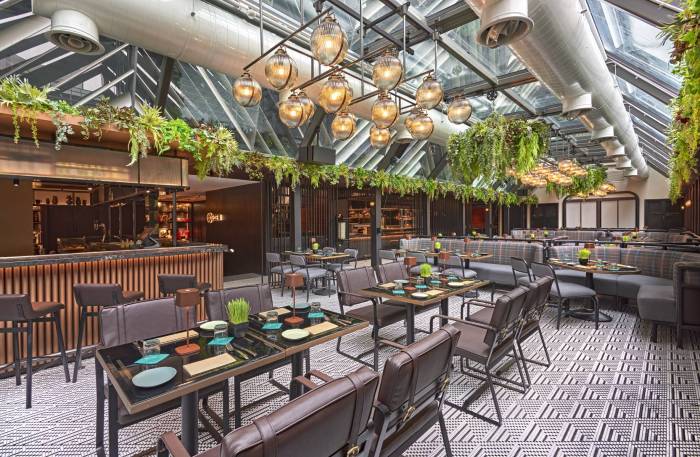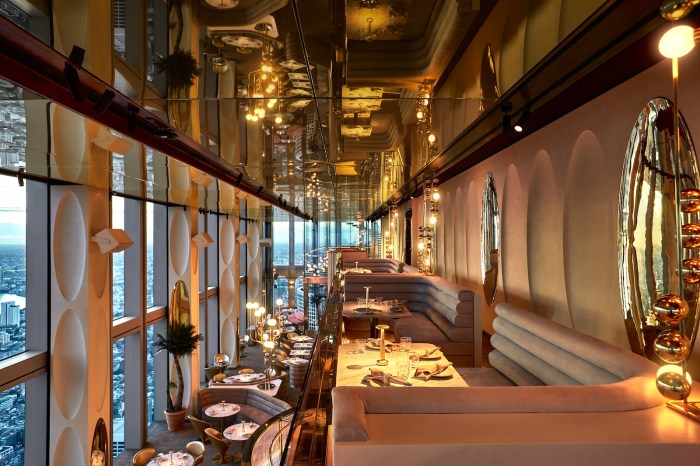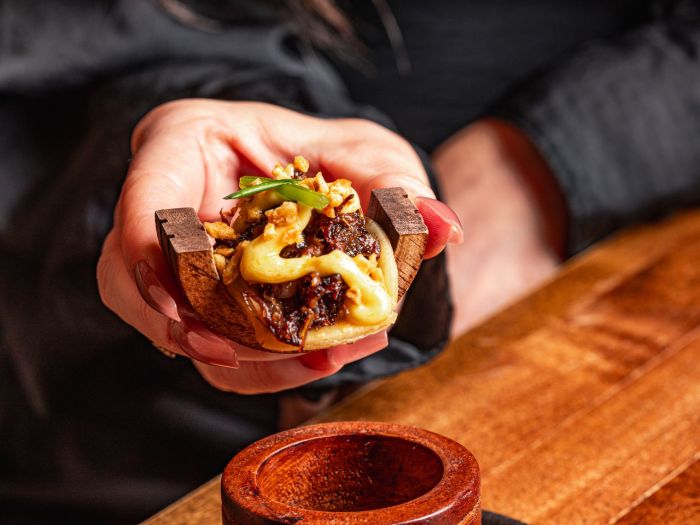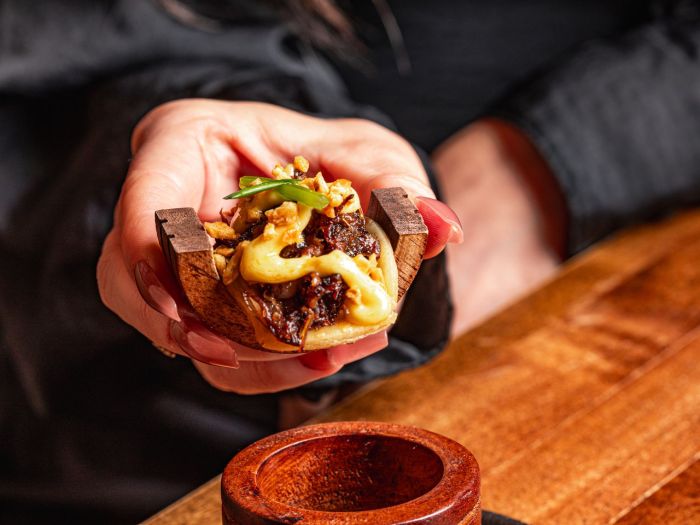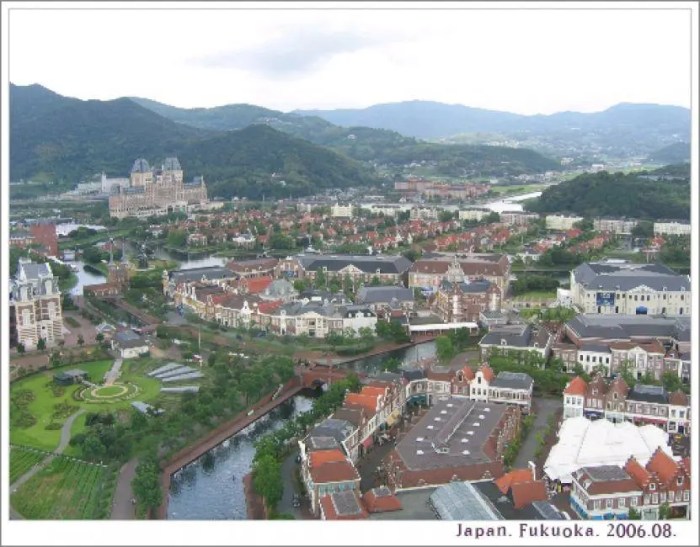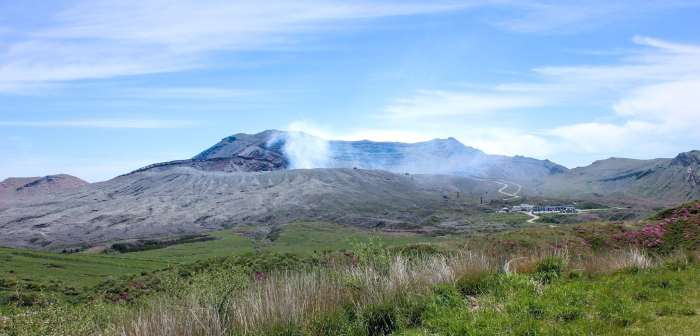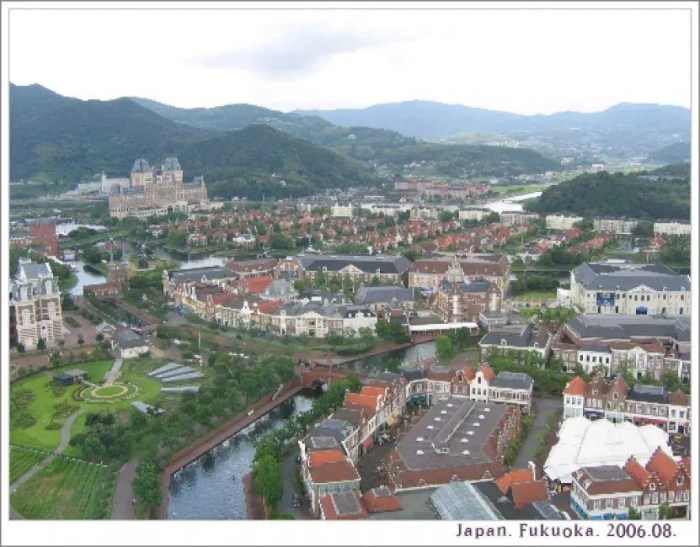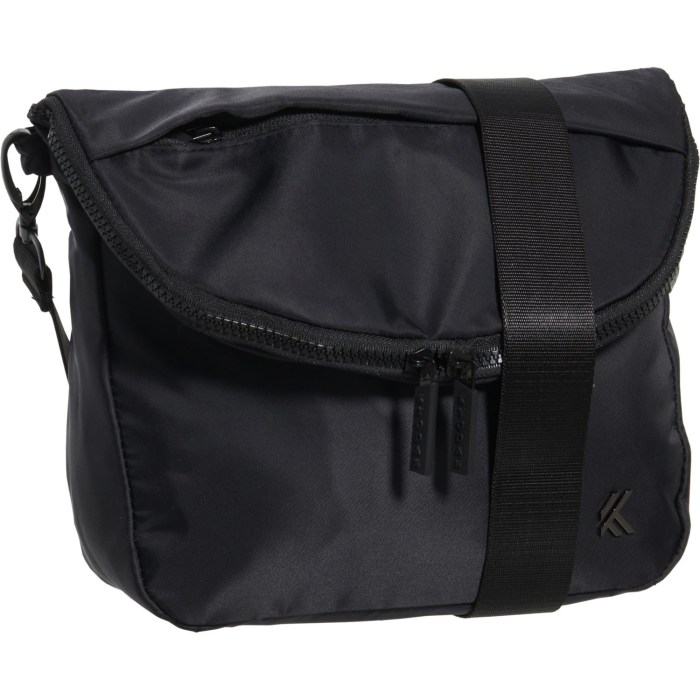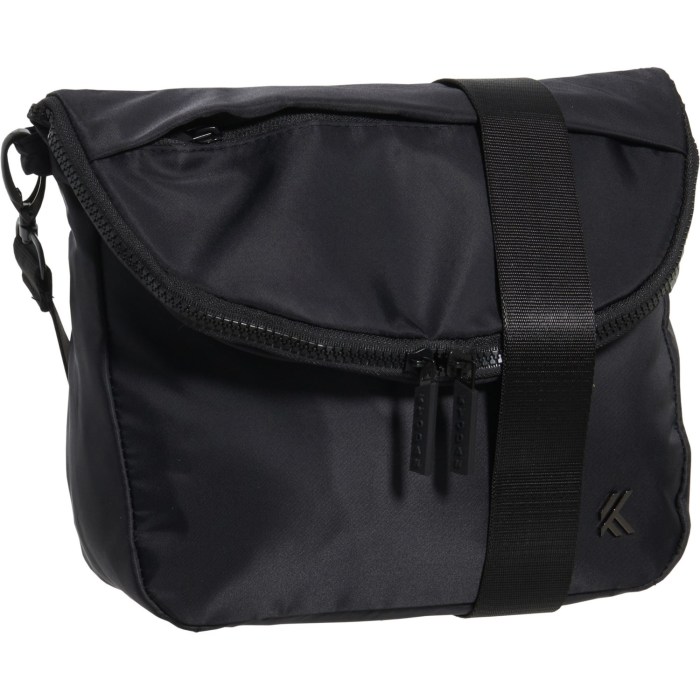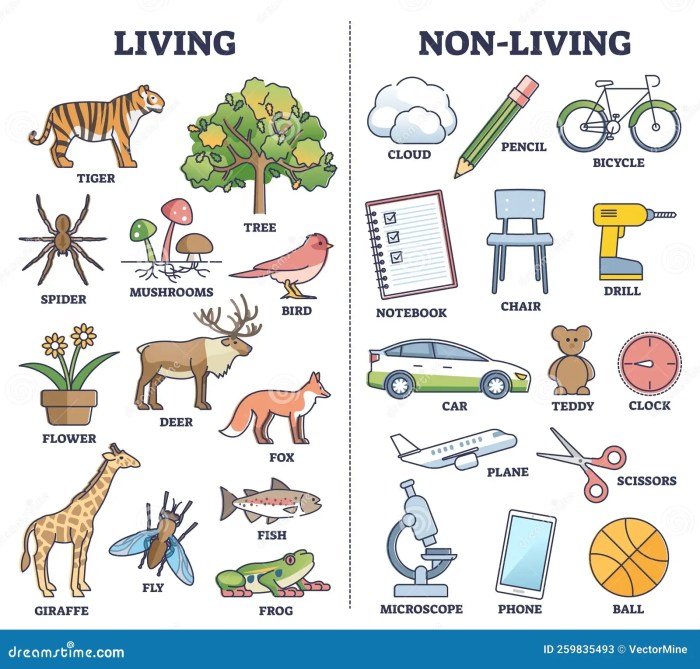Guide to Osaka Japan: Get ready for an unforgettable journey through the vibrant heart of Japan! This comprehensive guide will take you on a whirlwind tour of Osaka, from its bustling streets and historical landmarks to its world-renowned cuisine and unique cultural experiences. We’ll explore the city’s rich history, uncover hidden gems, and provide practical tips for making the most of your trip.
Prepare to be amazed!
This guide dives deep into everything Osaka has to offer, including must-see attractions, delectable food experiences, local insights, practical travel information, and budget-friendly options. Whether you’re a seasoned traveler or a first-time visitor, this guide is your essential companion for an incredible adventure.
Introduction to Osaka
Osaka, a vibrant metropolis in western Japan, captivates visitors with its unique blend of history, culture, and modern dynamism. Known as the “Kitchen of Japan,” Osaka boasts a rich culinary scene, lively atmosphere, and iconic landmarks that draw tourists from around the globe. Its historical significance and economic prowess have shaped its distinctive character, setting it apart from other major Japanese cities.The city’s energy and friendly hospitality create a unique experience, fostering a sense of community and warmth that extends beyond the typical Japanese urban landscape.
Osaka’s vibrant street food culture, bustling markets, and traditional temples offer a captivating glimpse into the country’s soul.
Historical Context and Cultural Significance
Osaka’s history is deeply intertwined with its role as a major economic and cultural center. For centuries, it served as a vital trading hub, contributing significantly to Japan’s economic development. This historical importance is evident in its architecture, including ancient castles and temples, as well as in its modern-day infrastructure. The city’s cultural significance extends beyond its economic contributions.
Osaka’s unique dialect, known as “Osaka-ben,” and its distinctive culinary traditions reflect a distinct regional identity that has evolved over generations.
Osaka’s Role in Japanese History and Economy
Osaka played a crucial role in Japan’s economic development, acting as a significant port city and trading center for centuries. The city’s proximity to the sea facilitated trade, and its strategic location contributed to its economic growth. Osaka Castle, a prominent landmark, stands as a testament to the city’s historical importance. Furthermore, Osaka’s modern-day economy thrives on a variety of industries, reflecting its adaptability and resilience.
From manufacturing to finance, Osaka continues to contribute significantly to Japan’s overall economic standing.
Unique Atmosphere and Vibe
Osaka’s atmosphere is distinct from other major Japanese cities. Its vibrant energy and outgoing nature are palpable throughout the city. This is often attributed to its strong sense of community and its focus on enjoyment. The city’s unique dialect, “Osaka-ben,” adds another layer of distinctiveness. Its lively street food scene and bustling markets contribute to a sense of energetic enthusiasm.
This atmosphere contrasts with the more reserved and formal demeanor often associated with other Japanese cities.
Osaka Attractions
This table highlights some of Osaka’s most popular attractions, offering a glimpse into the city’s diverse offerings. The selection covers a range of experiences, from historical landmarks to modern entertainment venues.
| Attraction Name | Description | Location | Opening Hours |
|---|---|---|---|
| Osaka Castle | A historic landmark, offering panoramic views and showcasing Osaka’s rich past. | Osaka Castle Park | Variable, check official website |
| Dotonbori | A vibrant entertainment district, famous for its street food and lively atmosphere. | Nishi-ku, Osaka | Typically 24 hours |
| Shinsekai | A historic entertainment district, offering a blend of traditional and modern entertainment. | Chuo-ku, Osaka | Variable, check official website |
| Osaka Aquarium Kaiyukan | A world-class aquarium, featuring diverse marine life and captivating exhibits. | Osaka | Variable, check official website |
Must-See Attractions
Osaka, a vibrant city brimming with history and culture, boasts a plethora of captivating attractions. From ancient temples to modern marvels, Osaka offers something for every traveler. This section delves into some of the iconic landmarks and popular tourist spots, exploring their significance and appeal to diverse interests.Osaka’s attractions, spanning centuries, offer a unique window into Japanese history, art, and culture.
Each location tells a story, from tales of samurai to the modern pursuit of culinary excellence. This journey through Osaka’s must-see destinations promises an unforgettable experience for every visitor.
Iconic Landmarks and Tourist Spots
Osaka is rich in iconic landmarks, each with its own unique charm and appeal. These spots, ranging from historical temples to bustling entertainment districts, offer a glimpse into the city’s diverse character. From the awe-inspiring grandeur of ancient temples to the vibrant energy of modern shopping arcades, Osaka captivates visitors with its distinctive blend of tradition and modernity.
- Osaka Castle: A symbol of Osaka’s resilience and a powerful reminder of its rich history. The castle, a testament to the city’s strategic importance, offers panoramic views and fascinating insights into feudal Japan. Its reconstructed structure, meticulous in detail, showcases the grandeur of the era and the meticulous restoration efforts.
- Dotonbori: A vibrant entertainment district known for its dazzling neon lights, lively atmosphere, and mouthwatering street food. Dotonbori is a bustling hub, attracting visitors with its unique blend of tradition and modernity, providing a vibrant backdrop for cultural exploration and culinary delights. The colorful and dynamic displays are an irresistible attraction for all types of travelers.
- Shinsekai: A nostalgic district with a distinctly old-world charm. Shinsekai, with its historical buildings and captivating ambiance, is a fascinating blend of tradition and modernity, providing a glimpse into Osaka’s past. The district’s allure lies in its ability to evoke a sense of nostalgia, while also providing modern amenities and entertainment options. It provides a captivating journey through Osaka’s evolution.
Historical Significance of Key Locations
Osaka’s historical significance is interwoven with its iconic landmarks. These locations offer tangible connections to the past, providing valuable insights into the city’s evolution and cultural heritage. Exploring these sites allows visitors to appreciate the rich tapestry of Osaka’s past and its enduring legacy.
- Osaka Castle: Built and rebuilt throughout history, Osaka Castle stands as a symbol of the city’s strategic importance and its resilience. The castle’s historical significance is profound, reflecting the ebb and flow of power, and its reconstruction is a testament to preserving cultural heritage.
- Sumiyoshi Taisha Shrine: A significant Shinto shrine, reflecting Osaka’s deep-rooted connection to traditional Japanese beliefs. This ancient shrine, with its rich history and spiritual atmosphere, holds a place of reverence in Osaka’s cultural tapestry, offering a serene escape from the city’s bustling energy.
Attractions for Different Interests
Osaka caters to diverse interests, providing engaging experiences for everyone. From history buffs to foodies, the city offers a wide array of attractions that resonate with various preferences. The city’s unique blend of tradition and modernity ensures there’s something for every visitor.
| Attraction Type | Example | Appeal |
|---|---|---|
| Historical Sites | Osaka Castle, Sumiyoshi Taisha Shrine | Appealing to history buffs and those interested in Japan’s past. |
| Museums | Osaka Museum of History | Providing in-depth knowledge and insights into Osaka’s history and culture. |
| Parks | Tempozan Harbor Village Park | Offering a serene escape from the city’s hustle and bustle, providing a relaxing experience for all visitors. |
| Food Markets | Kushikatsu restaurants | Appealing to foodies and those seeking authentic Japanese culinary experiences. |
Foodie Experiences
Osaka, a vibrant city bursting with life, is also a culinary paradise. Beyond the iconic temples and bustling streets, lies a world of flavourful experiences, waiting to be discovered. The city’s unique approach to food blends traditional Japanese techniques with innovative modern twists, creating a culinary landscape that’s both familiar and surprising.Osaka’s cuisine isn’t just about delicious food; it’s deeply rooted in the city’s history and culture.
It reflects the region’s industrious spirit and its close connection to the sea and fertile lands. The city’s renowned street food, ramen houses, and elegant restaurants all contribute to a vibrant tapestry of tastes and textures.
Osaka’s Unique Culinary Scene
Osaka’s food scene is renowned for its bold flavours and innovative dishes. The city embraces a “kinton” approach to cooking, which emphasizes fresh, high-quality ingredients and a vibrant, bold taste. This approach contrasts with the more delicate and refined styles found in other regions of Japan. Osaka’s chefs often experiment with new combinations and ingredients, creating unique dishes that capture the city’s energetic spirit.
Significance of Osaka Cuisine in Japanese Culture, Guide to osaka japan
Osaka’s cuisine holds a significant place in Japanese culinary culture. The city’s emphasis on fresh, bold flavours has influenced the development of Japanese food as a whole. The unique “kinton” approach, which focuses on vibrant tastes and high-quality ingredients, has spread beyond Osaka, becoming a defining characteristic of Japanese cuisine. This focus on flavour is part of the overall appreciation for food in Japanese culture, where meals are often social events.
Must-Try Dishes and Restaurants
Osaka boasts a wide array of culinary delights, from classic ramen to innovative fusion dishes. Here are a few must-try dishes and restaurants that represent the city’s diverse culinary landscape.
- Takoyaki: These savory balls of batter, often filled with octopus, are a quintessential Osaka street food. The perfect combination of chewy and crispy textures, paired with flavorful sauces, makes this dish incredibly popular. Find them at stalls throughout the city, each with their own unique recipes.
- Kushikatsu: Skewered deep-fried meat and vegetables, these are a great choice for a quick and tasty meal. The diverse range of ingredients offered in this dish offers a perfect balance of flavors, from tender meat to crispy vegetables.
- Okonomiyaki: This savory pancake, typically filled with cabbage, meat, and seafood, is another Osaka specialty. The wide array of variations available makes it a must-try dish for any visitor. The unique approach to cooking each recipe offers a distinct flavor profile.
- Ramen: Osaka is known for its delicious ramen. Many local ramen shops offer unique and creative broth combinations, showcasing the city’s innovative culinary approach. This often includes a focus on regional ingredients, resulting in unique flavor profiles.
Comparison of Osaka Restaurants
The following table compares three popular Osaka restaurants, highlighting differences in prices, types of food, and location.
My guide to Osaka is finally coming together! I’m so excited to share all the hidden gems and amazing food spots. If you’re looking for some fantastic deals on your trip, definitely check out the southwest fall winter travel sale for potential savings on flights and hotels. I’m planning to book my flights soon and hope to find some awesome deals! This will make the Osaka trip even better.
| Restaurant | Price Range (USD) | Type of Food | Location |
|---|---|---|---|
| Kintonya | Mid-range (20-40) | Traditional Osaka Cuisine with modern twists | Namba district, near Dotonbori |
| Daikokuya | Mid-range (25-45) | Variety of Japanese dishes, with a focus on regional specialties. | Shinsaibashi, known for its shopping area. |
| Kani Doraku | High-end (40+) | Seafood focused restaurant with extensive menu. | Umeda district, close to the Umeda Sky Building |
Local Experiences
Osaka, a vibrant city, offers a wealth of unique experiences beyond its famous food and attractions. Delving into the local culture reveals a warm hospitality and a rich tapestry of traditions, festivals, and markets that are deeply intertwined with daily life. Exploring these facets allows visitors to connect with the city on a deeper level, moving beyond the tourist trail and experiencing the true essence of Osaka.
My guide to Osaka, Japan, is packed with amazing spots, but if you’re looking for a quick getaway, consider checking out trip ideas for Harbour Island. There are some wonderful things to do there, like exploring the local markets and beaches. If you’re looking for a day trip from Osaka, that’s a great option, and a perfect way to add some unique island vibes to your Osaka itinerary.
trip ideas things to do harbour island has some great ideas for your visit. I’m still working on the final details of my Osaka guide, but I’m excited to share it soon.
Immersive Cultural Experiences
Osaka boasts a unique blend of modern and traditional aspects. This fusion is evident in various cultural practices and interactions. The city’s lively atmosphere and welcoming nature extend beyond the tourist hotspots, inviting visitors to participate in local events and customs. This allows for a profound understanding of the city’s character.
Local Festivals and Events
Osaka hosts a diverse range of festivals throughout the year, reflecting the city’s vibrant spirit. These celebrations offer a captivating glimpse into the local traditions and provide opportunities to immerse oneself in the local atmosphere. Festivals often feature elaborate parades, music, dance, and food stalls, offering a dynamic and immersive experience.
- Tennoji Festival (天王寺祭り): This spring festival is one of the most significant in Osaka, known for its spectacular floats and vibrant atmosphere. The festival is a testament to Osaka’s rich cultural heritage and is a popular event for both locals and tourists.
- Osaka Summer Festival (大阪夏の陣): Held in summer, this festival features traditional Japanese music and dance performances, along with various food stalls and games. This is a great way to experience the vibrant energy of Osaka during the warmer months.
- Osaka Food Festival (大阪グルメ祭り): A culinary celebration featuring a wide array of local delicacies, this festival is a perfect way to explore the city’s renowned food scene while experiencing the festivities. This is an excellent example of how Osaka blends its cultural heritage with modern culinary traditions.
Local Markets and Shops
Osaka’s markets are bustling hubs of activity, reflecting the city’s lively spirit. These vibrant marketplaces offer a unique opportunity to experience local life and discover unique treasures. They showcase a diversity of products, from fresh produce to handcrafted goods. Shopping at local markets is not only about acquiring items but also about observing the interactions and customs of the people.
| Local Experience | Location |
|---|---|
| Namba Market (難波市場) | Namba district |
| Shinsaibashi Shopping District (心斎橋ショッピング街) | Shinsaibashi district |
| Kuromon Market (黒門市場) | Nishi-ku district |
Local Customs and Traditions
Osaka’s traditions are deeply rooted in its history and cultural identity. The city’s warm hospitality and emphasis on community are visible in daily interactions and celebrations. Observing these customs and traditions provides valuable insights into the local way of life. These interactions can also be a way to learn about the city’s history.
“The warm hospitality of Osaka residents is a hallmark of the city’s culture.”
Practical Information
Osaka, a vibrant city brimming with culture and culinary delights, offers a seamless travel experience for visitors. Navigating the city’s efficient transportation network, understanding visa requirements, and choosing the right accommodation are key to a smooth and enjoyable trip. This section will provide you with the essential information needed to plan your Osaka adventure.
Transportation System
Osaka boasts an extensive and reliable public transportation system, making it easy to explore the city. The city’s train lines, including the JR lines and the Osaka Metro, crisscross the urban landscape, connecting major attractions and residential areas. Buses offer another convenient option, particularly for reaching less densely populated neighborhoods.
- The extensive network of train lines, particularly the JR lines and the Osaka Metro, provide rapid and efficient connections throughout the city. Train schedules are generally punctual, and passengers can easily purchase tickets at ticket vending machines or from station staff.
- Osaka’s subway system is an integral part of the public transportation infrastructure, connecting major landmarks and offering convenient access to many neighborhoods. Subways are often quicker and more direct than trains for shorter distances.
- The bus network is a valuable complement to the train and subway systems. Buses are particularly useful for reaching less central areas and for exploring more local neighborhoods, offering a wider range of routes.
| Transportation Method | Frequency | Cost | Route |
|---|---|---|---|
| JR Lines | Frequent; varies by line | ¥100-¥1000+ (depending on distance) | Connects major stations and cities outside Osaka |
| Osaka Metro | Frequent; varies by line | ¥100-¥1000+ (depending on distance) | Extensive network within Osaka, reaching major attractions |
| Buses | Frequent, especially during peak hours | ¥200-¥500+ (depending on distance) | Connects neighborhoods and areas not easily accessible by train or subway |
Visa Requirements
Visa requirements for visiting Osaka depend on your nationality. Check the Japanese embassy website or consulate for specific details regarding visa requirements for your nationality. This is crucial to ensure a smooth entry process.
Currency
The Japanese Yen (JPY) is the official currency. Exchanging currency in advance or using ATMs are common options for obtaining yen. Major credit cards are widely accepted in most tourist areas and restaurants.
Safety
Osaka is generally a safe city for tourists. As with any destination, common sense precautions should be taken, including being aware of your surroundings and valuables. Staying vigilant, particularly in crowded areas, is essential.
Accommodation Options
Osaka offers a diverse range of accommodation options, catering to various budgets and preferences. Hotels, hostels, and guesthouses are readily available. Choosing the right accommodation depends on your travel style and budget.
- Hotels offer a range of services, from basic amenities to luxurious features. Hotels in central locations often command higher prices but provide easy access to attractions. Hotels near train stations are a great option for convenient travel.
- Hostels are a budget-friendly option, particularly popular with young travelers and backpackers. Hostels typically offer shared dorm rooms and communal areas, fostering a sense of community among guests.
- Guesthouses offer a more intimate and personalized experience, often with a focus on local culture and interaction with hosts. They are a good option for travelers seeking a more authentic experience and often offer more affordable rates than hotels.
- Location plays a crucial role in accommodation selection. Accommodation in central areas is typically more expensive but offers convenient access to attractions. Consider factors such as proximity to transportation hubs, restaurants, and entertainment venues.
- Price is a key factor for many travelers. Hotels near tourist areas generally have higher prices, while hostels and guesthouses offer more budget-friendly options. Comparing prices and amenities is important to ensure the best value for your money.
Day Trip Options

Beyond the vibrant city of Osaka, a wealth of captivating destinations await just a short journey away. These day trips offer a chance to explore diverse landscapes, historical sites, and cultural experiences, enriching your understanding of Japan beyond the city limits. They provide a taste of Japan’s beauty and offer a welcome change of pace from the bustling urban scene.Exploring these destinations allows for a deeper understanding of Japan’s multifaceted culture and history, offering insights into different regions and traditions.
My guide to Osaka is finally coming together! It’s been a whirlwind of research, and I’m so excited to share the best spots. While I was researching temples and traditional markets, I couldn’t help but get inspired by the vibrant energy of Philadelphia, and the great things to do there. For example, checking out best things to do in philadelphia gave me a fantastic perspective on how to best showcase Osaka’s hidden gems, like the Dotonbori district, and the Osaka Castle.
I’m aiming for a truly comprehensive guide, covering everything from food tours to historical sites, to help you plan your perfect trip.
They serve as excellent opportunities to connect with the country’s essence, often revealing a unique perspective on the broader Japanese experience.
Day Trip Destinations from Osaka
Osaka serves as a fantastic base for exploring surrounding areas. Proximity to key historical and natural wonders makes day trips an ideal way to experience more of Japan. These destinations provide a balanced blend of history, nature, and cultural immersion.
- Nara: Famous for its ancient temples and the friendly wild deer roaming freely in Nara Park. This historic city, a short train ride from Osaka, offers a glimpse into ancient Japanese culture. The Todai-ji Temple, housing a giant bronze Buddha statue, and Kasuga Taisha Shrine, renowned for its thousands of lanterns, are must-sees. The interaction with the deer adds a unique and charming touch to the experience.
- Kyoto: While a full-day trip to Kyoto may not be feasible, a half-day trip or even a day trip can offer a taste of this cultural heartland. Kyoto is a city of ancient temples, palaces, and gardens. Highlights include Fushimi Inari Shrine with its thousands of vibrant red gates, Arashiyama Bamboo Grove, and Kiyomizu-dera Temple with its stunning wooden stage.
The intricate architecture and serene atmosphere of Kyoto provide a different perspective on Japan’s rich heritage.
- Kobe: Known for its port and delicious seafood, Kobe offers a different culinary and cultural experience compared to Osaka. Explore the historic port area, visit the Kobe Harborland complex, and enjoy the vibrant atmosphere of the city. The city is also well-known for its cuisine, particularly Kobe beef, although a full day may not be sufficient to fully experience it.
Transportation options include the Shinkansen (bullet train) or local trains. Kobe’s location on the coast offers stunning views of the surrounding sea.
Transportation to and from Day Trip Destinations
Efficient transportation networks connect Osaka to nearby destinations. This allows for a seamless transition between the city and its surrounding areas. The most common modes of transport include local trains, buses, and even the Shinkansen (bullet train) for longer distances. This provides ample flexibility and convenience.
Comparison of Day Trip Destinations
The best day trip depends on your interests and the amount of time you have. A day trip to Nara is ideal for those interested in history and animal encounters. A half-day or even a full day to Kyoto offers a taste of the cultural heartland. A day trip to Kobe provides a maritime experience with culinary delights.
| Day Trip Destination | Travel Time | Must-See Attractions |
|---|---|---|
| Nara | Approximately 1 hour by train | Todai-ji Temple, Kasuga Taisha Shrine, Nara Park deer |
| Kyoto | Approximately 30-60 minutes by train | Fushimi Inari Shrine, Arashiyama Bamboo Grove, Kiyomizu-dera Temple |
| Kobe | Approximately 1 hour by train | Kobe Harborland, Port Area, Culinary experiences |
Budget Considerations: Guide To Osaka Japan
Osaka offers a fantastic blend of culture, cuisine, and entertainment, but planning your budget is crucial for a smooth and enjoyable trip. Understanding the average costs for various aspects of your trip will help you create a realistic spending plan and avoid unexpected financial stress. This section will delve into average costs for food, accommodation, transportation, and activities, along with strategies for saving money and different budget-friendly options.Budgeting effectively is key to maximizing your Osaka experience without breaking the bank.
This guide provides practical tips and comparisons to help you choose the best options for your individual needs and financial goals.
Average Costs in Osaka
Osaka offers a wide array of options to suit various budgets. Knowing the average costs for different categories will allow you to better estimate your total expenses and plan accordingly.
- Food: Expect to spend around ¥1,000 to ¥3,000 (USD 7-20) for a satisfying meal at a local restaurant. Street food and casual eateries provide excellent value, often costing ¥500 to ¥1,500 (USD 3.50-10). High-end dining can easily exceed ¥5,000 (USD 35).
- Accommodation: Hostels typically range from ¥3,000 to ¥8,000 (USD 21-56) per night. Budget-friendly hotels and guesthouses can be found for ¥5,000 to ¥12,000 (USD 35-84) per night. Mid-range hotels and business hotels can cost between ¥10,000 and ¥20,000 (USD 70-140) per night. Luxury options can exceed ¥20,000 (USD 140) per night.
- Transportation: Osaka’s transportation system is efficient and affordable. A 7-day ICOCA card, used for trains, buses, and subways, can cost around ¥1,500 (USD 10). Single trips are usually between ¥150 and ¥300 (USD 1-2) depending on distance.
- Activities: Entry fees for attractions like Osaka Castle or Dotonbori can range from ¥500 to ¥2,000 (USD 3.50-14) per person. Day trips to nearby areas like Nara or Kyoto typically involve transport and entry fees that could total ¥5,000 to ¥10,000 (USD 35-70) per person.
Saving Money in Osaka
There are several strategies for minimizing costs without sacrificing the quality of your Osaka experience.
- Eat like a local: Explore local eateries, food stalls, and street food vendors for authentic and budget-friendly meals. Try “teishoku” (set meals) for great value.
- Utilize the ICOCA card: Purchase a multi-day ICOCA card for convenient and cost-effective transportation.
- Take advantage of free activities: Many parks, gardens, and temples offer free admission, allowing you to explore Osaka’s beauty without spending money.
- Consider budget-friendly accommodation: Hostels and guesthouses offer affordable lodging options, and you can save money by sharing a room.
Budget Accommodation Options
Osaka offers a variety of lodging options to fit different budgets.
- Hostels: Hostels provide affordable accommodation, often with shared rooms and social opportunities.
- Budget Hotels/Guesthouses: These offer a balance between affordability and comfort, providing basic amenities at a lower cost than mid-range hotels.
- Airbnb: Consider Airbnb for a more home-like experience, often at a lower cost than traditional hotels, especially for groups.
Budget-Friendly Activities
Numerous ways exist to experience Osaka’s attractions without spending a fortune.
- Explore parks and gardens: Osaka has beautiful parks and gardens that are free to visit, providing a relaxing and refreshing escape.
- Attend free events: Check local listings for free concerts, festivals, and cultural events happening during your visit.
- Take a walking tour: Numerous free walking tours provide insights into Osaka’s history and culture.
Average Cost of Activities in Osaka
This table provides a general idea of the average costs for various activities in Osaka. Prices are approximate and may vary depending on the specific activity and vendor.
| Activity | Average Cost (JPY) | Average Cost (USD) |
|---|---|---|
| Osaka Castle Entry | 800 | 5.70 |
| Dotonbori Dinner | 1500-3000 | 10.50-21.00 |
| Namba Parks | Free | Free |
| Shopping at Shinsaibashi | Variable | Variable |
| Day Trip to Nara | 5000-10000 | 35-70 |
Accommodation Options
Osaka offers a diverse range of accommodation options to suit every budget and preference. From budget-friendly hostels to luxurious hotels, travelers can find lodging that perfectly complements their Osaka adventure. Choosing the right place to stay can significantly impact your overall experience, influencing your exploration of the city and your interactions with its vibrant culture.Finding the perfect place to rest your head after a day of exploring Osaka’s exciting sights and sounds is key to enjoying your trip.
Different accommodation types cater to various needs and preferences, offering varying levels of comfort, amenities, and price points. Understanding the pros and cons of each type can help you make an informed decision that aligns with your travel style and budget.
Hotel Options
Hotels in Osaka cater to a wide spectrum of needs, from basic to extravagant. A range of amenities, such as restaurants, spas, and business centers, is typically available. Hotel locations vary, from the bustling city center to more tranquil areas outside the central districts. Generally, hotels in central areas tend to be more expensive.
Hostel Options
Hostels provide a social and budget-friendly alternative to hotels. They often offer private and dorm-style rooms, allowing travelers to connect with fellow travelers. Common areas and shared facilities like kitchens are common in hostels, which often means a more immersive experience within the local scene. Hostels are a popular choice for budget-conscious travelers or those seeking a more social atmosphere.
Airbnb Options
Airbnb provides a unique way to experience Osaka, offering a wide range of apartments, houses, and rooms, often located in residential neighborhoods. This can offer a more authentic local experience, with the potential to interact with local communities and discover hidden gems. However, some Airbnb accommodations may lack the amenities of hotels, such as 24/7 reception or concierge services.
Comparison Table
| Accommodation Type | Price Range | Location |
|---|---|---|
| Luxury Hotels | ¥10,000 – ¥50,000+ per night | Central Osaka, Namba, Shinsekai |
| Mid-range Hotels | ¥5,000 – ¥10,000 per night | Central Osaka, Umeda, various districts |
| Hostels | ¥2,000 – ¥5,000 per night (dorm) | Central Osaka, often near stations |
| Airbnb Apartments | ¥3,000 – ¥15,000+ per night | Various districts, including residential areas |
“Consider your priorities when choosing accommodation. If a prime location and comprehensive amenities are essential, a hotel might be the best choice. However, if you value a more social atmosphere and a lower budget, a hostel could be a perfect fit.”
Osaka’s Nightlife

Osaka’s nightlife is a vibrant tapestry woven from diverse experiences, reflecting the city’s energetic spirit and its blend of tradition and modernity. From bustling karaoke bars to intimate cocktail lounges, Osaka offers something for every taste and budget. This dynamic scene is more than just entertainment; it’s an integral part of Osaka’s cultural fabric, providing opportunities for socializing, relaxation, and immersion in the city’s unique atmosphere.Osaka’s nightlife scene is a melting pot of experiences, catering to a wide range of interests.
Whether you crave the lively energy of a bustling club or the cozy ambiance of a traditional Izakaya, Osaka has something to offer. This exploration delves into the various types of nightlife venues, highlights the cultural significance of nightlife in Osaka, and provides a comparative look at the diverse districts.
Types of Nightlife Venues
Osaka’s nightlife options extend far beyond the typical bar or club. The city boasts a diverse array of venues, catering to different tastes and preferences. From the traditional Izakaya, where socializing over drinks and snacks is paramount, to the bustling karaoke parlors, where the stage is your own, Osaka’s nightlife is a captivating blend of local traditions and global influences.
These venues offer a glimpse into the city’s cultural tapestry, providing a chance to engage with the local community and experience the vibrant energy of Osaka.
- Izakayas: These traditional Japanese pubs are perfect for casual drinks and light meals with friends. They often feature a wide selection of local snacks and drinks, creating a welcoming atmosphere for socializing.
- Bars: From intimate cocktail bars to lively pubs, Osaka offers a range of bar experiences. These provide opportunities for conversation and relaxation in a more sophisticated setting.
- Clubs: Osaka’s clubs cater to a more energetic crowd, offering a dynamic atmosphere with pulsating music and dancing. These establishments often feature DJs or live bands, creating a vibrant nightlife scene.
- Karaoke: Osaka’s karaoke scene is legendary. These establishments offer a chance to let loose, sing your heart out, and experience a unique form of entertainment.
Cultural Significance
Nightlife in Osaka is deeply intertwined with the city’s social fabric. It’s a space where people unwind after work, connect with friends, and celebrate special occasions. The vibrant energy of Osaka’s nightlife is a key component of the city’s cultural identity. The various types of nightlife venues, from bustling karaoke rooms to quiet bars, contribute to the city’s diverse and dynamic social scene.
Osaka’s nightlife reflects the city’s energetic spirit and provides a platform for cultural exchange.
Nightlife Districts
Osaka boasts several distinct nightlife districts, each with its own unique character and appeal. Namba, for example, is a hub for a variety of bars, clubs, and karaoke establishments, reflecting the district’s central location and its role as a major entertainment hub. Shinsekai, with its historical charm, offers a more traditional atmosphere, while other areas provide alternative or niche experiences.
These diverse districts cater to different preferences and provide a nuanced picture of Osaka’s vibrant nightlife.
Comparison of Popular Nightlife Spots
| Nightlife Spot | Atmosphere | Music Style | Price Range |
|---|---|---|---|
| Bar A (Namba): | Intimate, sophisticated | Live Jazz | Mid-range |
| Club B (Umeda): | Energetic, dance-focused | Electronic, Pop | High |
| Karaoke C (Shinsaibashi): | Fun, lively | Various | Mid-range |
| Izakaya D (Shinsekai): | Casual, social | Japanese pop, local music | Low |
Note: This table provides a general overview. Prices and specific details may vary.
Last Point
So, are you ready to experience the magic of Osaka? This guide provides a comprehensive overview, covering everything from iconic landmarks to local traditions and practical tips for navigating the city. From bustling markets to hidden culinary delights, Osaka promises an unforgettable experience. Pack your bags, grab your camera, and get ready for an adventure of a lifetime!

